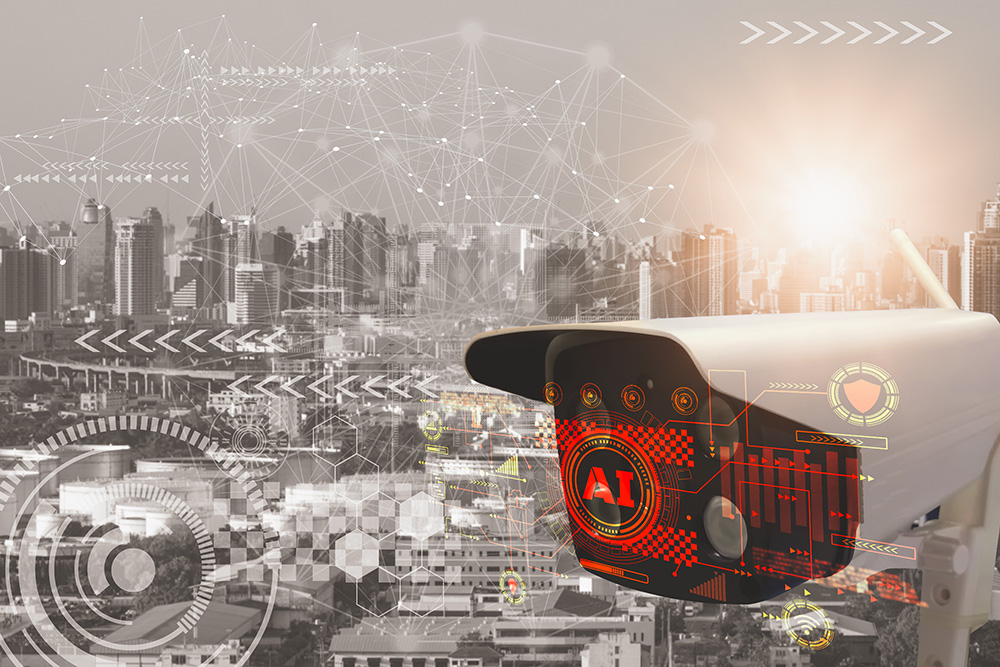
To get a snapshot of the current state of the ever-changing vision industry, ITS International asked some leading players one broad question. While their answers ranged across a number of areas, a couple of common themes emerged. So, here goes…
What technological advance or trend in vision technology will have the biggest influence in road transport enforcement over the next year?
Maarten Mijwaart, business developer Benelux, Scandinavia, UK & Ireland, Tattile

In the years ahead we will be witnessing the convergence of three separate trends that have been going on for a number of years now. First, we are seeing the continuing increase in performance of integrated circuits, sensors and device hardware. Second, we have only just begun to scratch the surface when it comes to the potential of artificial intelligence in vision technology. And third, we are seeing a continued increase of integration of technologies that used to be regarded as separate entities. These three trends combined will result in new products and solutions that we did not think would be achievable before. New generations of vision technology solutions will combine licence plate recognition, vehicle classification, traffic monitoring, behavioural analytics, predictive analytics and possibly biometric identification into one application. Vehicles and other traffic participants can be classified and individual and collective traffic behavioural patterns can be better monitored. Violations will de detected more accurately. Congestion and incidents will be predicted more precisely.We expect that vision technology will be the major driver to maintain and improve road safety and traffic flow.
René Pohl, product manager for traffic technology, Vitronic
We see two major trends:
- Digitisation of traffic applications versus data security: how can the balancing act between central Big Data applications and data processing in compliance with data protection regulations be achieved?
- Fusion of applications: one hardware for different customers, e.g. police, customs, parking surveillance, traffic management, toll collection and control.
Jayden Xu, senior ITS solution manager at Hikvision

I would like to share my thoughts in two parts, one on the traditional ITS and the other on digitised ITS construction. For traditional ITS, which I think is about video perception and collection, the advancement of vision technology in this sphere will mainly reflect on:
- Low-light capability improvement, which enables devices like traffic cameras to capture crystal-clear images even in very dark conditions.
- Efficient and effective capturing capability, this highly depends on the smart algorithm which is engineered into sensing devices to better support capturing and accurately identifying vehicles that violate traffic regulations.
Besides these two main trends, I think these technological trends are also instrumental:
- To be more environmentally-friendly and reduce urban light pollution, more and more suppliers promote infrared camera devices for road transport enforcement. However, these cameras would fail to identify vehicles running red lights at intersections, as images are black and white. It becomes key to have devices that do not emit white light, while being able to gain coloured images to analyse traffic violations. As a leading provider of innovative video security products, Hikvision is strong in video-imaging research and developing traffic products with top-notch imaging technology.
- A majority of urban cities do not support setting up gantries on roads, which is challenging for traffic cameras to well capture violated vehicles. So it would be more practical to take advantage of street light poles or the other available poles to install devices. That places higher demand on device algorithms, smart algorithms can still allow precise recognition with less strict device installation.
- Speeding is a major traffic issue across cities, usually to detect speeding vehicles, it needs the joint work of traffic camera, radar, and supplemental light. However, a roadside pole can hardly install these three units. Hence, it becomes trending to integrate the three components in one. Hikvision has been exploring in this area for years and developed the all-in-one equipment for traffic violation detection use.

No matter how technology revolutionises, or the traffic business evolves, the ultimate goal of transport is always about getting people and objects to destinations safe and fast. Digitised ITS construction has come to the surface in recent years. Differing from traditional ITS construction, it pays more attention on the data-driven values to users. The possibilities for traffic video data are endless: by gathering and analysing data about vehicle traffic on roads, users can intuitively understand the traffic situations in cities - for example, where traffic builds up, which roads are heavily congested, which roads are more likely for accidents to occur and have most violations, etc. Those data help traffic authorities and city planners to better optimise the road design and improve road infrastructure; traffic police can also rely on this to better dispatch police to guide the traffic at key intersections.
Pedro Bento, chief sales officer at Carrida Technologies
The climate crisis, increasing congestion and a general rethinking of urban spaces and our everyday environment places severe challenges on cities and regions. This leads to a rising demand and new market opportunities for smart city and traffic management solutions. At the same time, the vision industry has seen massive technological advances in recent years, with ever-greater sensor resolution and image quality, more computing power and dedicated hardware units such as GPUs and NPUs for image-processing. In addition, technology such as deep learning and artificial intelligence enable advanced applications for complex tasks. But in our perception at Carrida it’s the ease of use and accessibility of technologies such as ALPR that really boosts new applications for road transport enforcement and other traffic management applications. While in the past, months and years of development have been needed to get to market with specialised camera solutions for tasks such as licence plate recognition and vehicle make& model identification, this can be done within hours or days with state-of-the-art technologies. The Carrida SDK, for example, is a comprehensive software library, that runs fully hardware- and manufacturer-independent on any Windows or Linux PC as well as ARM-based edge devices. The OEM software library is easy to integrate into existing systems and provides a high accuracy of more than 99% for number plate identification and recognition. Latest AI technology caters for best performance and added functionalities are available, such as the make and model recognition for any car. The initial setup is done within a few steps and due to the long list of supported countries the systems can be used worldwide. In addition to the SDK, the very same software library is also available as Carrida Edge, a software that runs on any edge device and can be accessed and configured from any web browser. The Carrida Engine is also available as a ready-to-use smartphone app for different applications. This brings ALPR and other technologies for traffic management from traditional custom camera solutions to any edge device and even to everyone’s smartphone. As machine learning and artificial intelligence advance, there will be even more possibilities for ALPR. There will be more data sources, like Internet of Things devices, and different types of cameras to complement the feed from an ALPR system. Looking to the future, we don’t have any doubt that ALPR technology will continue to increase its presence in traffic management, tolling and parking systems with a better accuracy/cost ratio. With high accuracy, easy implementation and availability for a broad range of devices and applications, it will be the heart of safety and security systems around the world.

Enzio Schneider, senior product manager - custom projects, Basler
From my point of view, still one of the major points is bringing costs down. This is possible with a continuous launch of new, smaller sensors. These smaller sensors allow either higher resolution or smaller, and cheaper, lenses increasing the flexibility to apply for various projects. However, it’s still difficult for the lens manufacturers to keep the pace of new sensors being released.
Anthony Incorvati, segment development manager for transportation at Axis Communications
Despite the use cases, whether it be for various types of road enforcement from wrong-way detection or designated lane (HOV, HOT, etc) violation, to understanding vehicle flow, near-miss analysis, vehicle/pedestrian data collection/analysis, etc., the common denominator in all of this is the ultimate sensor – the network video (or better known) IP camera. However, the camera cannot do it alone. The emergence of specialised AI/Deep Learning algorithm providers that are growing in an accelerated rate will address these uses cases and many more to come regarding the ITS market.












